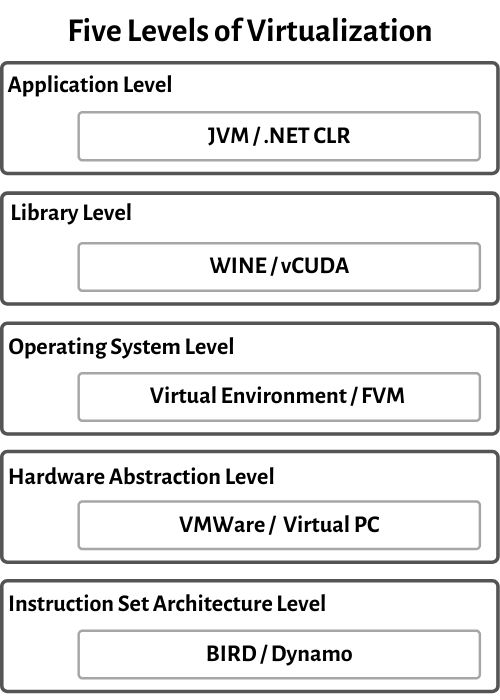Implementation Levels of Virtualization using multiple platforms
In the world of computing, using just one software instance is not enough anymore. Professionals are looking to test their programs or software on multiple platforms.
But constraints create challenges in doing so. The solution? Virtualization. Here, users can create various platform instances such as operating systems, applications, etc.
Virtualization has been present since the 1960s, when it was introduced by IBM. Yet, it has only recently caught the expected traction owing to the influx of cloud-based systems.
Virtualization, to explain in brief, is the capability to run multiple instances of computer systems on the same hardware. The way hardware is being used can vary based on the configuration of the virtual machine.
The best example of this is your own desktop PC or laptop. You might be running Windows on your system, but with virtualization, now you can also run Macintosh or Linux Ubuntu on it.
Now, there are various levels of virtualizations that we are going to be seeing. Let’s have a look at them.
Virtualization is not that easy to implement. A computer runs an OS that is configured to that particular hardware. Running a different OS on the same hardware is not exactly feasible.
To tackle this, there exists a hypervisor. What hypervisor does is, it acts as a bridge between virtual OS and hardware to enable its smooth functioning of the instance.
There are five levels of virtualizations available that are most commonly used in the industry. These are as follows:
In ISA, virtualization works through an ISA emulation. This is helpful to run heaps of legacy code which was originally written for different hardware configurations.
These codes can be run on the virtual machine through an ISA.
A binary code that might need additional layers to run can now run on an x86 machine or with some tweaking, even on x64 machines. ISA helps make this a hardware-agnostic virtual machine.
The basic emulation, though, requires an interpreter. This interpreter interprets the source code and converts it to a hardware readable format for processing.
As the name suggests, this level helps perform virtualization at the hardware level. It uses a bare hypervisor for its functioning.
This level helps form the virtual machine and manages the hardware through virtualization.
It enables virtualization of each hardware component such as I/O devices, processors, memory, etc.
This way multiple users can use the same hardware with numerous instances of virtualization at the same time.
IBM had first implemented this on the IBM VM/370 back in 1960. It is more usable for cloud-based infrastructure.
Thus, it is no surprise that currently, Xen hypervisors are using HAL to run Linux and other OS on x86 based machines.
At the operating system level, the virtualization model creates an abstract layer between the applications and the OS.
It is like an isolated container on the physical server and operating system that utilizes hardware and software. Each of these containers functions like servers.
When the number of users is high, and no one is willing to share hardware, this level of virtualization comes in handy.
Here, every user gets their own virtual environment with dedicated virtual hardware resources. This way, no conflicts arise.
OS system calls are lengthy and cumbersome. Which is why applications opt for APIs from user-level libraries.
Most of the APIs provided by systems are rather well documented. Hence, library level virtualization is preferred in such scenarios.
Library interfacing virtualization is made possible by API hooks. These API hooks control the communication link from the system to the applications.
Some tools available today, such as vCUDA and WINE, have successfully demonstrated this technique.
Also Read: What are the Top Most Open Source Virtualization Software?
Application-level virtualization comes handy when you wish to virtualize only an application. It does not virtualize an entire platform or environment.
On an operating system, applications work as one process. Hence it is also known as process-level virtualization.
It is generally useful when running virtual machines with high-level languages. Here, the application sits on top of the virtualization layer, which is above the application program.
The application program is, in turn, residing in the operating system.
Programs written in high-level languages and compiled for an application-level virtual machine can run fluently here.
Conclusion
Even though there are five levels of virtualization, each enterprise doesn’t need to use all of them. It depends on what the company is working on as to which level of virtualization it prefers.
Companies tend to use virtual machines for development and testing of cross-platform applications. With cloud-based applications on the rise, virtualization has become a must-have for enterprises across the globe.
You May Also Like to Read:
5 Benefits of Desktop Virtualization



